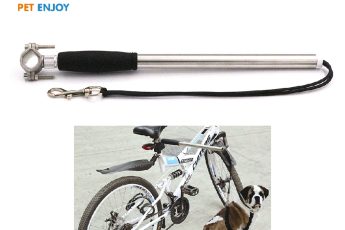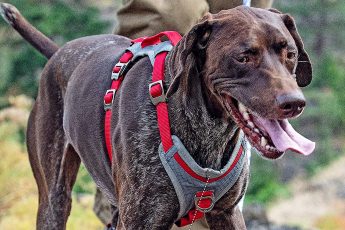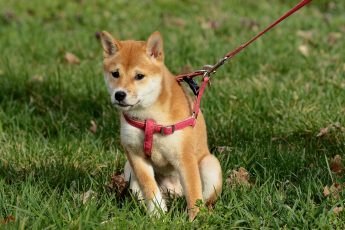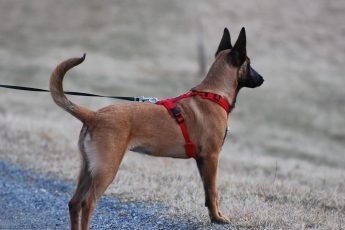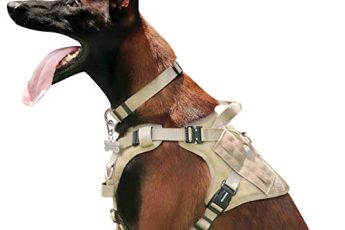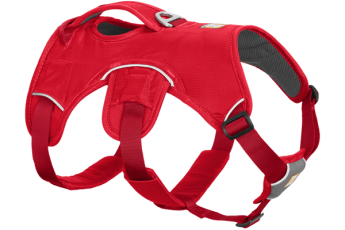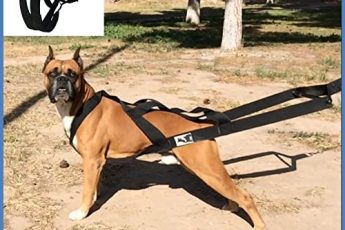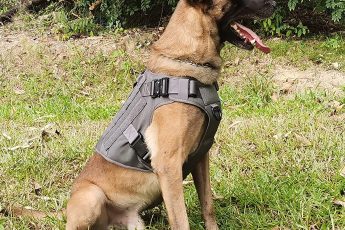If you’re new to the world of dog harnesses, you may be wondering why one has a handle on the back and another doesn’t. Here’s the lowdown. Does a harness with a handle on the back help your dog? Can a dog back out of it? How do I prevent my dog from pulling while we walk? And what about harnesses that have multiple clips that fit around your dog’s neck? Animal Haven director Mika Ito, an expert on adopting a rescue dog, recommends a harness as an effective way to control a dog’s behavior.
Why does a dog harness have a handle?
The handle on the back of a dog harness is very handy and is not only functional, but it can prevent your dog from getting into trouble. It will also make it easier for you to carry your dog if the need arises. A dog can get scared easily, even a calm one. If your dog is scared, it can act out of character, so you can use the handle to guide him or her.
Another benefit of a dog harness is its ability to help older dogs get up. Many of them feature a handle, which will give you additional control when walking your dog. Some models have handles on their back, such as the Coastal Reflective Control Handle Harness. The most important thing to look for in a dog harness is the quality of the handle. Most harnesses come with a horizontal handle across the back, and some have a vertical handle that stretches from the neck to the tail. The best harnesses have extra material over the handle, such as soft padding or plastic.
Is there a harness that a dog can’t back out of?

If your pup likes to chew on things, you’ll need a dog harness that won’t allow him to get out. Fortunately, there are several options available. Here’s how they work:
The first thing you need to know is that dogs have a natural tendency to escape their harnesses. This is often a result of the harness being made of cheap material. The material can rub against the dog’s skin, making it uncomfortable for him. A dog will instinctively want to escape from uncomfortable things, so it may be a good idea to invest in a harness with a thicker material.
If you’re going to purchase a harness for your pet, choose a model that will fit the dog’s body. This is the easiest way to start harness training, but there are a few factors to consider before purchasing a harness. First, make sure the dog has no allergies. A sensitivity to contact could make the harness painful for your dog. Make sure the harness doesn’t have any irritants, like a scent or a rash. Then, make sure you get a harness that is made of high-quality materials.
Are back clip harnesses good for dogs?
Are back clip harnesses good for dogs, and if so, which ones? The reason many owners buy one is because they think it will stop their dog from pulling. But while the harness does not discourage pulling, it does provide mechanical advantages for owners walking their dog on a leash. It also prevents leash reactivity, which can lead to aversions. Some dogs have difficulty slipping out of the harness, and they may also become too excited to be walking.
For brachiocephalic breeds, back-clip harnesses are great. They relieve pressure on the throat and increase your dog’s attention span. For other types of dogs, the harness will only intensify the pull from your dog’s throat and can cause dragged behavior. Some dog owners also report that back-clip harnesses are easier to clean and are more versatile. However, if you’re unsure whether back-clip harnesses are right for your dog, make sure to read some reviews of each type before purchasing one.
How do I stop my dog from pulling when we walk?
If your dog has a tendency to pull on the leash, the main answer to the question “How do I stop my pet from pulling when we walk?” is not to allow the dog to pull in order to get where it wants to go. Instead, you should train your dog to focus on the person holding the leash. It will eventually learn to follow your lead and stop pulling when you’re in the right direction.
While the action of pulling on a leash may seem negative to humans, it is a natural instinct for dogs. Their instinct is to push against the restraint and move forward. When you force your dog to walk in the opposite direction, he will likely pull on the leash because it’s so exciting. Even though your dog may think he’s the dominant, he’s not. He’s simply expressing his natural curiosity.
Are no pull harnesses cruel?
No pull harnesses are a useful training tool to prevent your dog from pulling. These harnesses have two points for attaching the lead and reflective trim is added for visibility in low-light conditions. It is also handy for restraining your dog in your car. Whether or not they are cruel depends on how you train your dog. While they can be a useful training aid, they are not a cure-all for your dog’s yawning or pulling problems.
While a no-pull harness is better than a back clip harness, some dogs still have a history of pulling. If your dog does this, it has probably learned how to get forward by pulling. In this case, taking one step together with him signals that pulling works. This can take a while. Nevertheless, no pull harnesses are great for dogs that aren’t trained. In order to achieve the maximum benefits from your no-pull harness, it is important to find the right fit. An improperly-fitting harness will cause your dog discomfort and may not achieve its full potential.
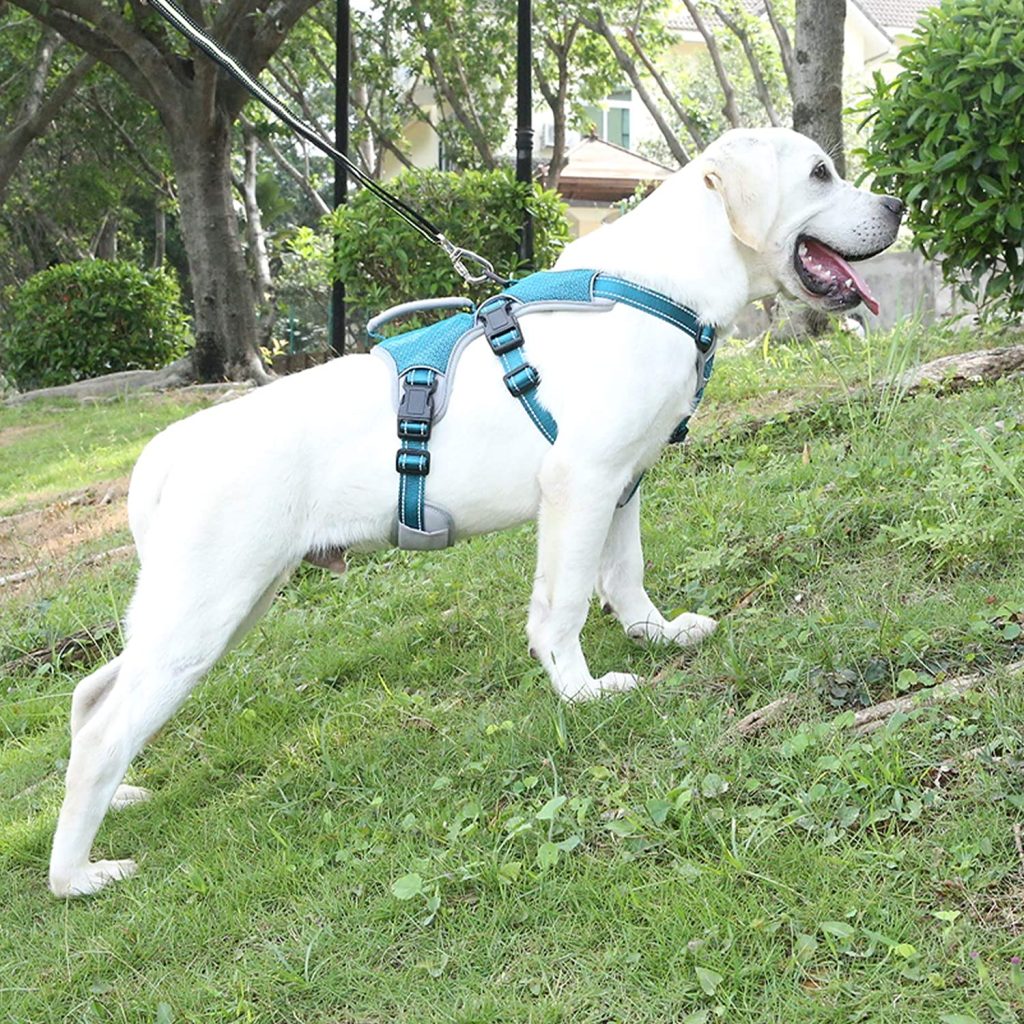
Can a Dog Harness With a Handle on Back Help My Dog?
When choosing a dog harness with a handle on the back, you’ll want to look for features that are beneficial to you and your dog. Reflective strips and bright colors will make your dog more visible to other drivers, and you’ll want buckles that are durable and slip-resistant. You’ll also want to consider the harness’s back loop so that you can use it in the car. The following is a guide to dog harnesses with a handle on the back.
What’s the best harness for a dog that pulls?
The HDP Big Dog No-Pull Dog Harness is a heavy-duty model that fits dogs with a wide chest. The D-ring on the back strap allows you more control over your unruly pup. Other features include reflective top straps, a sturdy top handle, and a wide chest opening. This harness is comfortable and durable, though some pet parents complained that the belly strap eventually loosens.
For the medium-sized dog, the Medium Dog Harness is recommended. If you’re looking to make your puppy stand out from the crowd, the Classic Black Harness is a great choice. AZ Animals is a growing team of animal researchers, writers, editors, and pet owners. We love the fun and furry faces of our canine friends! Please visit our website today to learn more about dog harnesses!
Why does my dog keep slipping out of his harness?
One of the most common problems when using a harness for a dog is slipping out. Because the harness is one piece, it is not easy to slip the dog out of it, even if it is fitted properly. If you want your dog to stay in his harness, you have to position yourself behind the dog and position his leg or foot behind the hindquarter. When he sees your foot, he will stop backing up.
Although all dogs are capable of slipping out of a harness, some breeds are more prone to this problem than others. Flighty or nervous dogs are more likely to slip out of their harness. Another factor is that shelter dogs often have bad experience with harnesses. Therefore, they might be nervous and have difficulty using them properly. So, it’s best to choose a harness that is difficult to slip out of for such a dog.
How do you put an easy walk harness on a dog?
First, you’ll need to find out where your dog’s breastbone is located, then adjust the harness so that the front strap is parallel to the ground. The harness straps should fit snugly, but not too tightly. You can find this information by placing two fingers under the front strap. Make sure that the connector rings are level with your dog’s breastbone. Once they are the correct height, you’ll be ready to go!
Another important factor to consider when choosing a harness is the size. Not all harnesses fit the same way, and the best one will fit snugly around your dog’s neck. Choose the right size based on the breed of dog you own. This will make it easier to put on your dog and avoid injuries. Also, make sure the harness fits correctly, as an improperly fitting harness can cause significant harm to your dog.
Is a front or back clip harness better?
If you’re looking to train your dog to walk on a leash, you’re probably wondering: is a front or back clip dog harness better for you? There are pros and cons to each type, but you’ll want to consider which one is best for your dog. A front clip dog harness will help to discourage your dog from pulling. It also makes walking easier, because your dog will feel comfortable wearing it.
When choosing a harness for your dog, you’ll first need to determine whether a front or back clip is best for your dog’s size. Big dogs are usually best suited for front clip harnesses, while small dogs should be fitted with a back clip. Front clip dog harnesses allow you to easily take control of your dog while walking, but are not ideal for small dogs.
Do harnesses calm dogs down?
Many dog owners wonder: Do dog harnesses calm dogs? While many benefits of harnesses are well documented, the question remains: do they really work? Harnesses can help a dog stay calm during walks and other activities, such as evening strolls. They also offer positive reinforcement and comfort for both the dog and its owner. There are also some drawbacks to harnesses, including improper material, unfitness, and health and environmental concerns. This article will provide a guide for harness safety and benefits.
If your dog seems overly anxious about wearing a harness, consider giving it a try. An anxiety wrap spreads pressure across the dog’s chest, creating a calming “hug.” The gentle pressure releases chemicals called endorphins, which promote feelings of well-being. Your pet may find this uncomfortable or may associate it with being pinched, which in turn causes anxiety. You may even be surprised to find that your dog’s negative association with the harness is not the cause of its anxiety – it’s a result of another incident, such as an encounter with another dog or motorcycle.

